Preparing tableya into Sikwate or Filipino Hot Chocolate is very similar to preparing hot chocolate from cacao powder. You heat up your liquid of choice, add in your tableya or cocoa powder, and mix until combined - it's ready in just 3 minutes!
If you enjoy hot chocolate, also check out my 2-ingredient hot cocoa and Mexican hot chocolate.
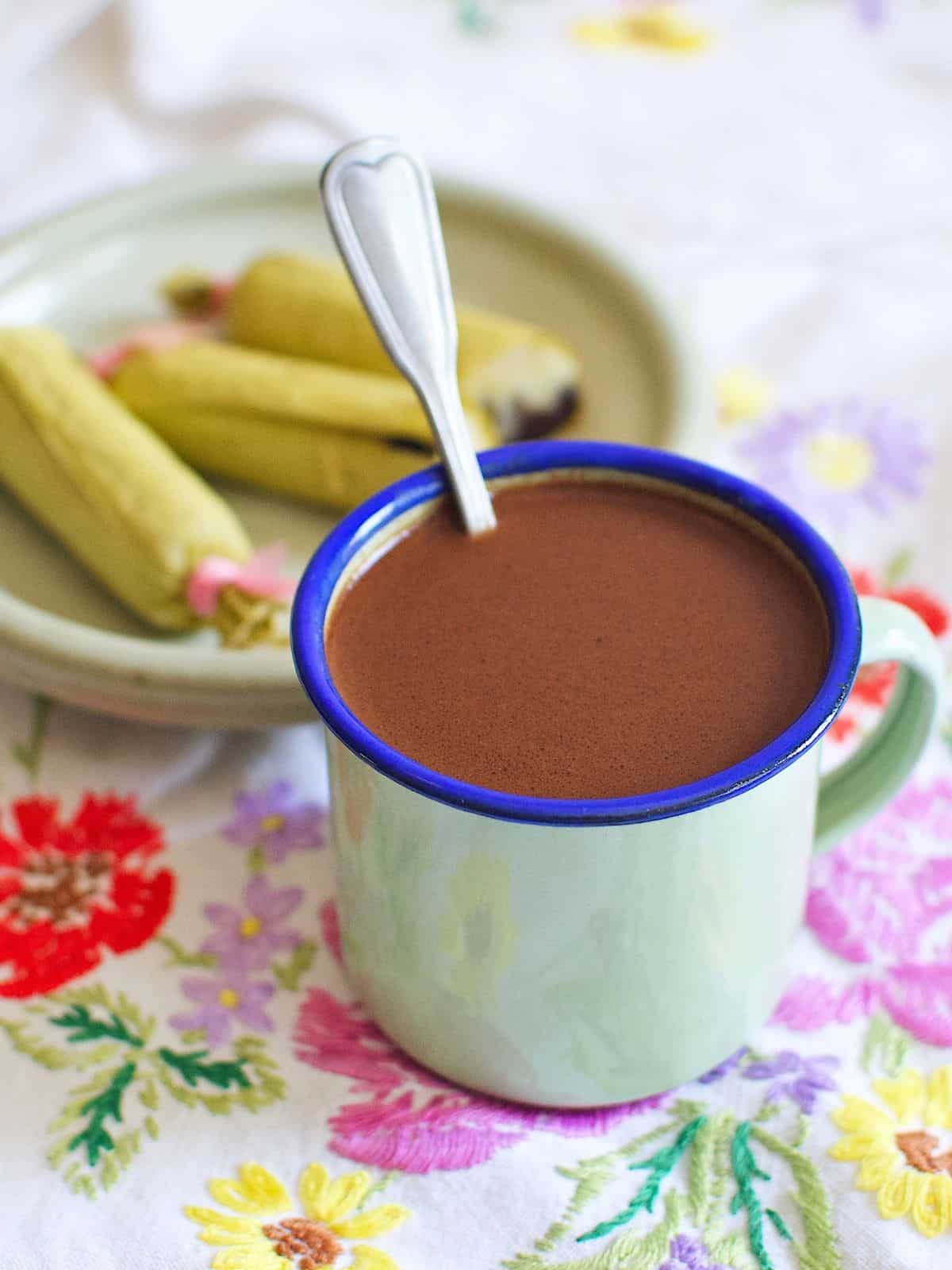
Jump to:
⭐ Why This Recipe is Great
Vegan Hot Chocolate: unlike a typical powdered hot cocoa mix from a packet, or even a homemade version made with cocoa powder, this recipe calls for just 2 ingredients and is completely vegan-friendly (if you still want to add sweetener, consider adding organic sugar and/or sweetened condensed coconut milk).
Perfect for Dipping: much like with thick French hot chocolate, you can dip breakfast pastries or bread into your sikwate as a flavor enhancer and afternoon snack or sweet breakfast treat.
Batching-Friendly: this is a very easy vegan hot chocolate recipe to make up to a week ahead in a large batch and keep in the fridge for yourself or to serve at a large gathering.
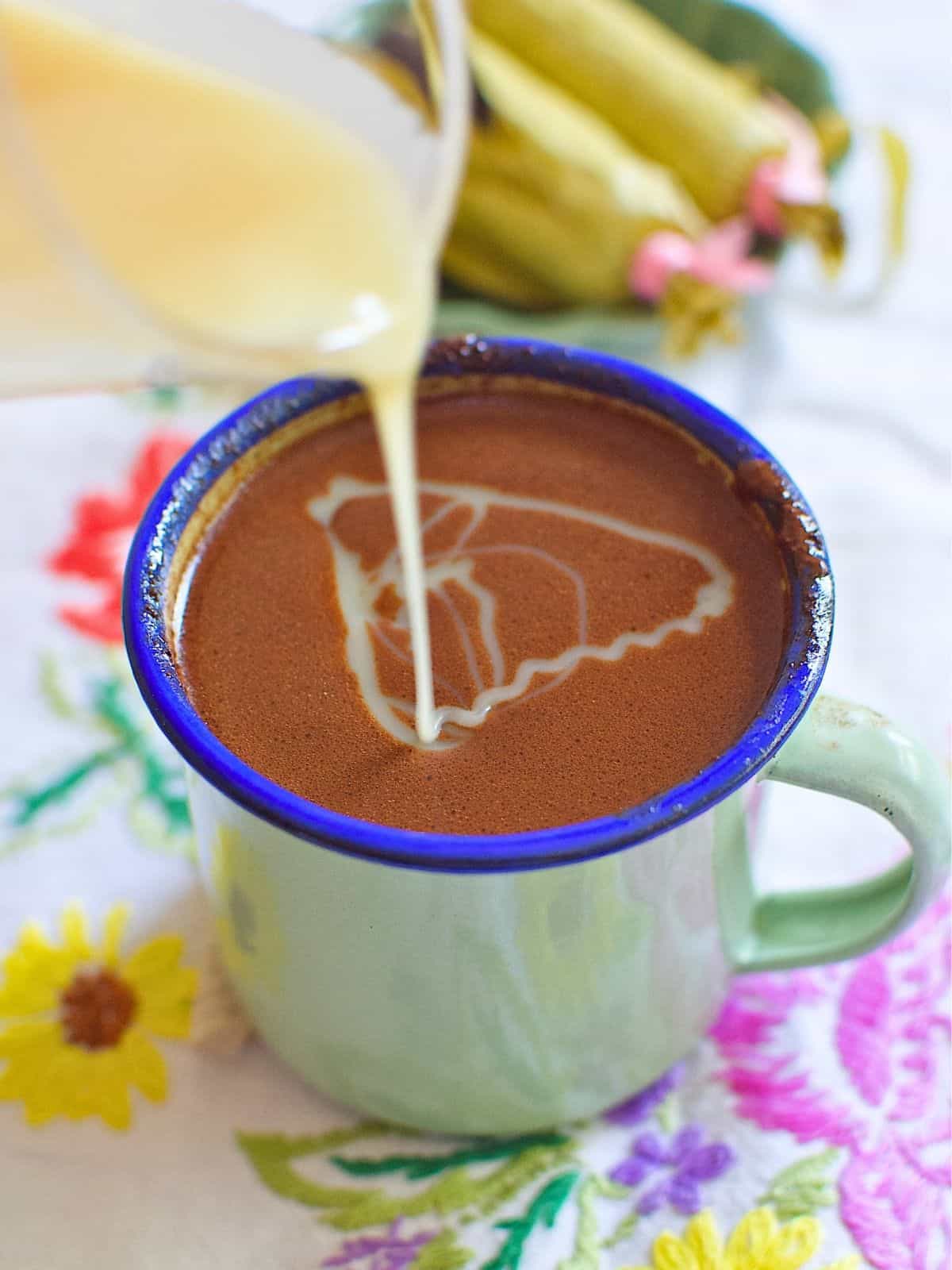
🎓 What Is Tablea, Or "Tableya?"
Put simply, tablea is a ball of ground-up cacao beans, usually heated and combined with water to make a traditional Filipino chocolate drink called sikwate. Many people cite that the name tablea (or tableya) refers to the Spanish word for "tablet," a reference to the food's shape.
But the name may also come from the Spanish word tablear, meaning rolling and dividing, an allusion to the way in which the balls are formed. In researching this article, I've learned that when a Filipino's chocolate craving hits, it's usually not for a bar of chocolate, but for a steaming cup of breakfast tablea.
A local cacao farmer in Davao told me that Filipinos usually spell with their ears, which would explain the variations in spelling. Whichever word you choose is a matter of preference, just like how you choose to prepare your tablea.
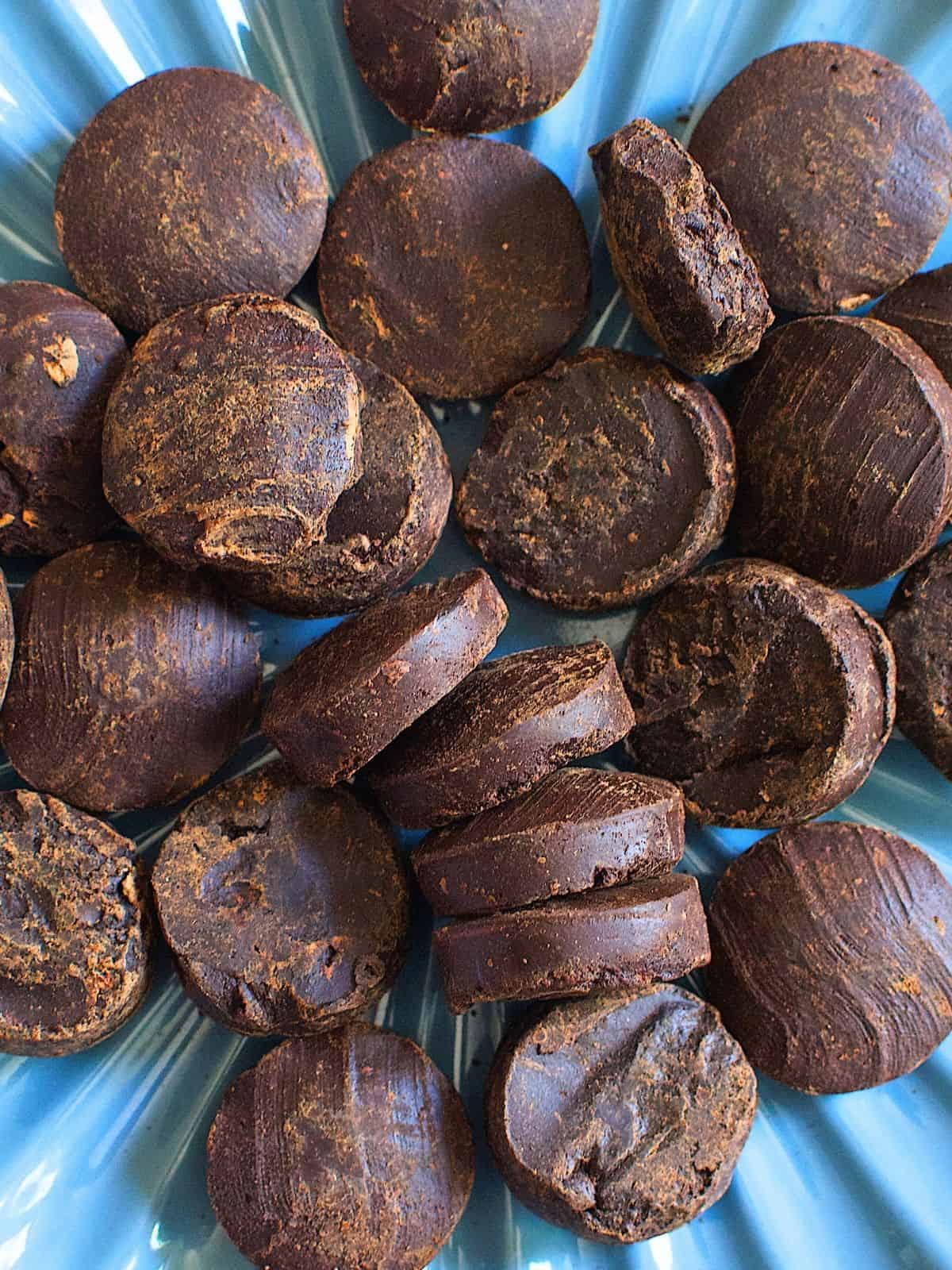
❓ How Is Tablea Made
Cacao beans are the agricultural product used to make chocolate.
To make chocolate, the beans are harvested, fermented, and dried, and then they're roasted, peeled, and ground into a smooth cacao mass. The purest chocolate is cacao mass, plus sugar.
But to make traditional tablea, you simply grind the cacao beans a little less, and then form the mass into balls to store for later use (instead of adding sugar and refining further). For those who grew up with expiration dates on everything including hot chocolate, you may be wondering, does tablea expire?
The answer is no. The higher percentage of fat means that it your tablea could have some cocoa butter rising to the surface and making it appear grey and moldy, but rest assured that it's still fine to consume.
In fact, most tablea will start to look like this at some point, since it's not traditionally tempered (meaning that the food's fat structure is stabilized). So old tablea should be just fine to eat, as long as it still tastes good.
🍫 Ingredients
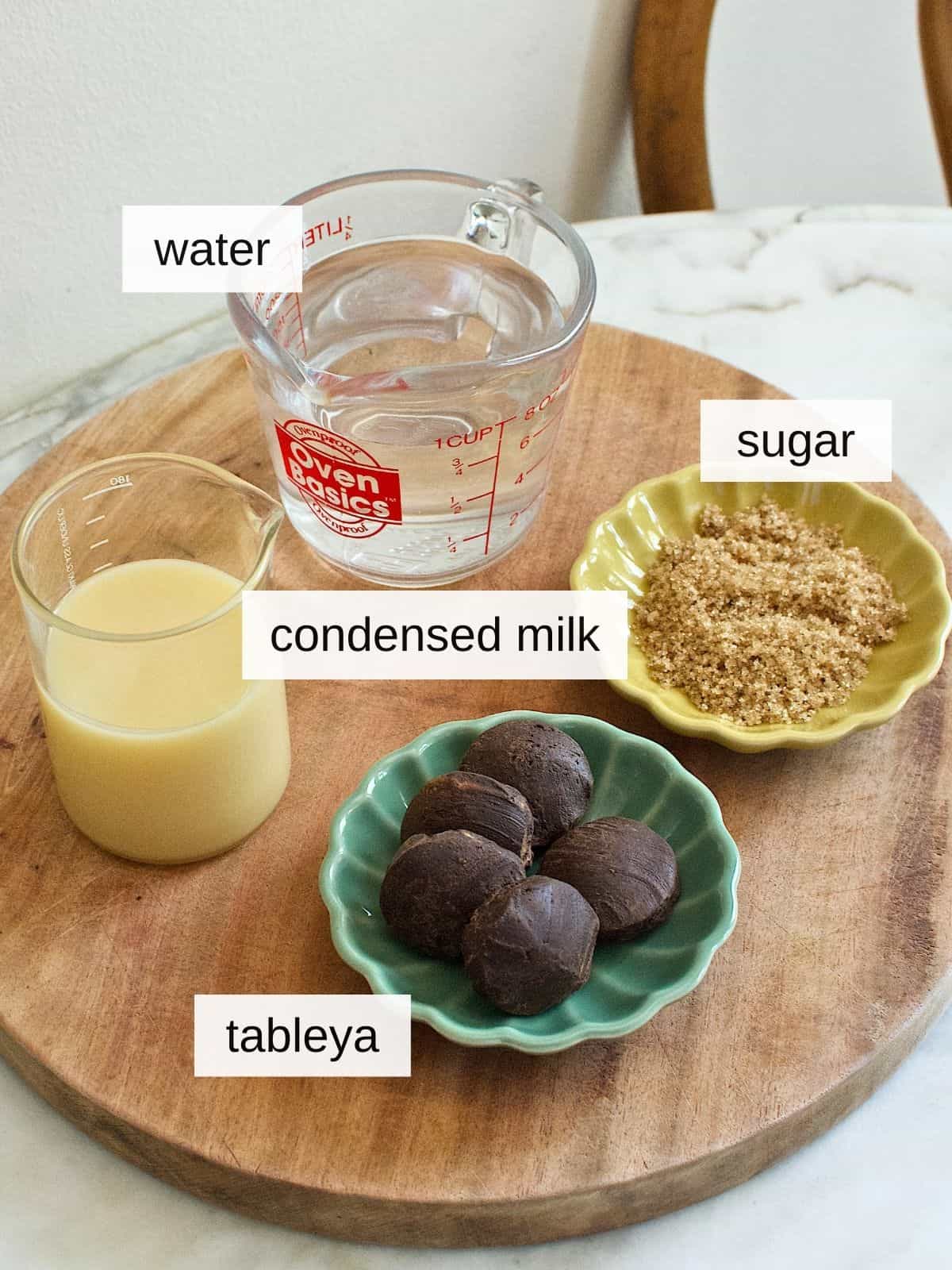
Water or Milk: water is more traditional, but milk is more common these days.
Tableya: you can use any 100% chocolate you'd like, even cacao paste or ceremonial cacao.
Sugar: this is optional, but traditionally you'd add muscovado or maybe coconut sugar to taste.
Condensed Milk: also optional, this adds both texture and sweetness to the recipe.
See recipe card for exact ingredients and measurements.
🔪 How to Make Sikwate: Step-by-Step
Step 1) To prepare sikwate, first put the water in the pot and bring it to a boil (image 1).
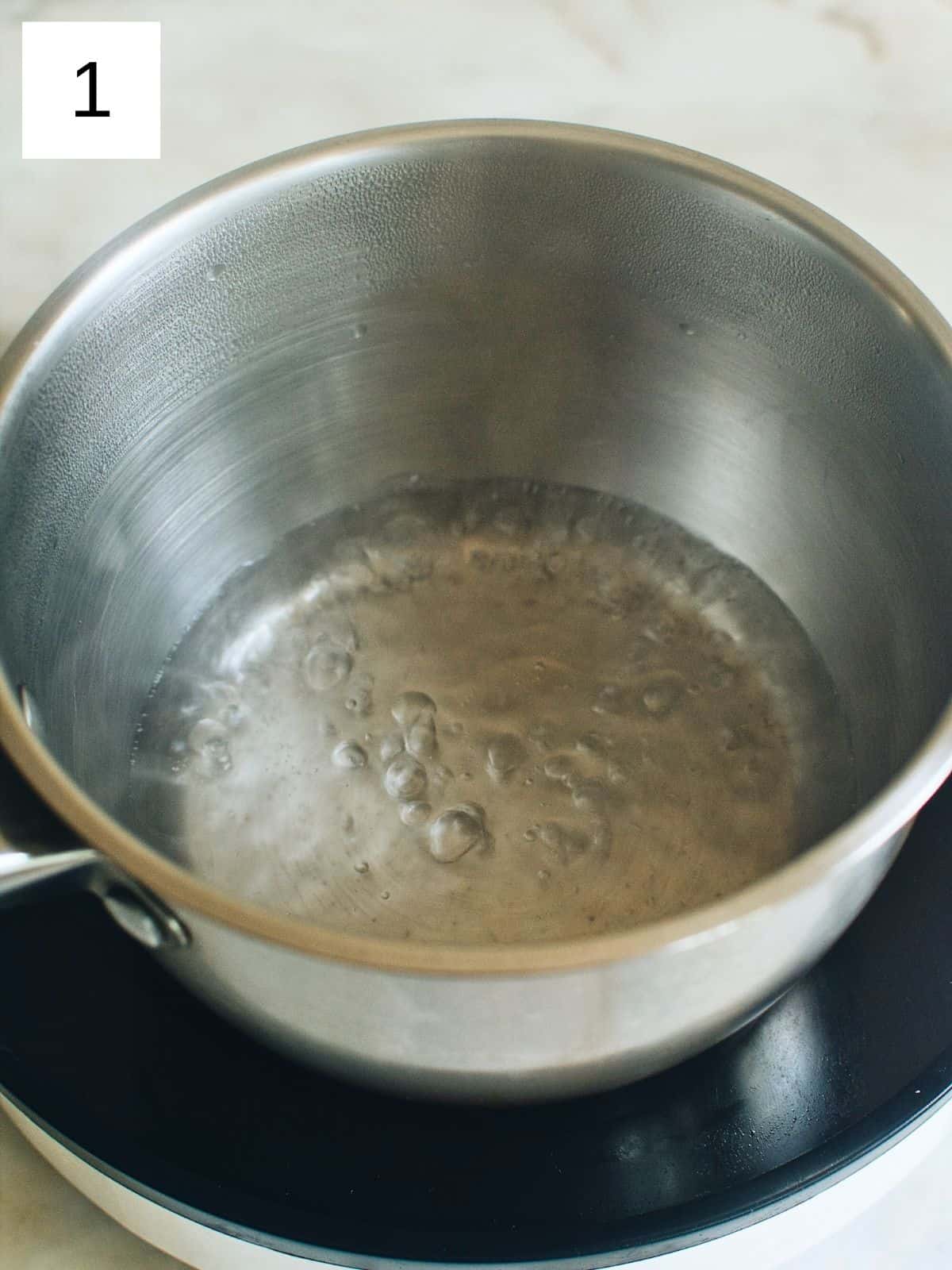
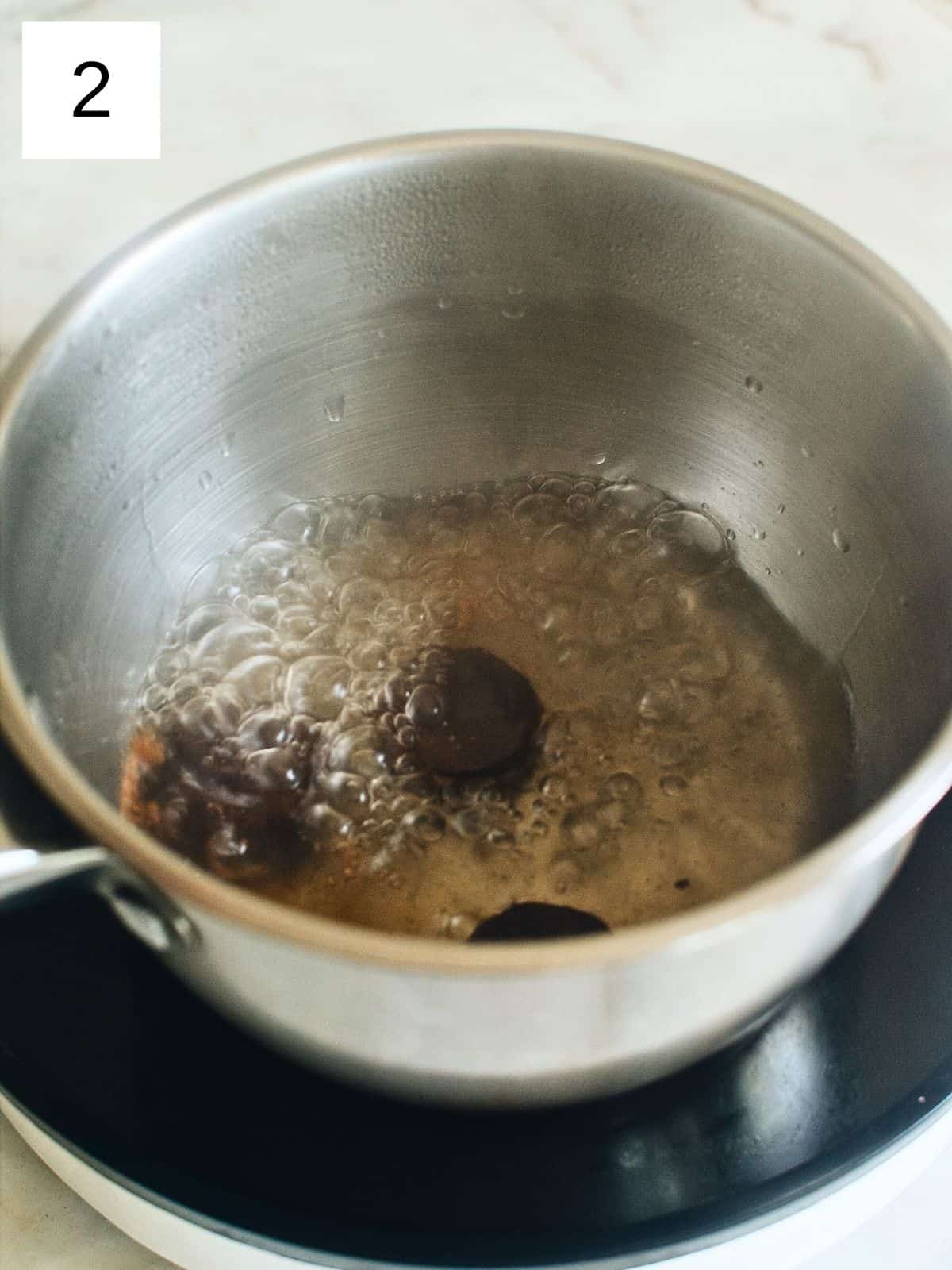
Step 2) Then drop in the tableya (image 2) and wait ten seconds for it to soften (image 3) before breaking it up with a fork. Turn off the heat.
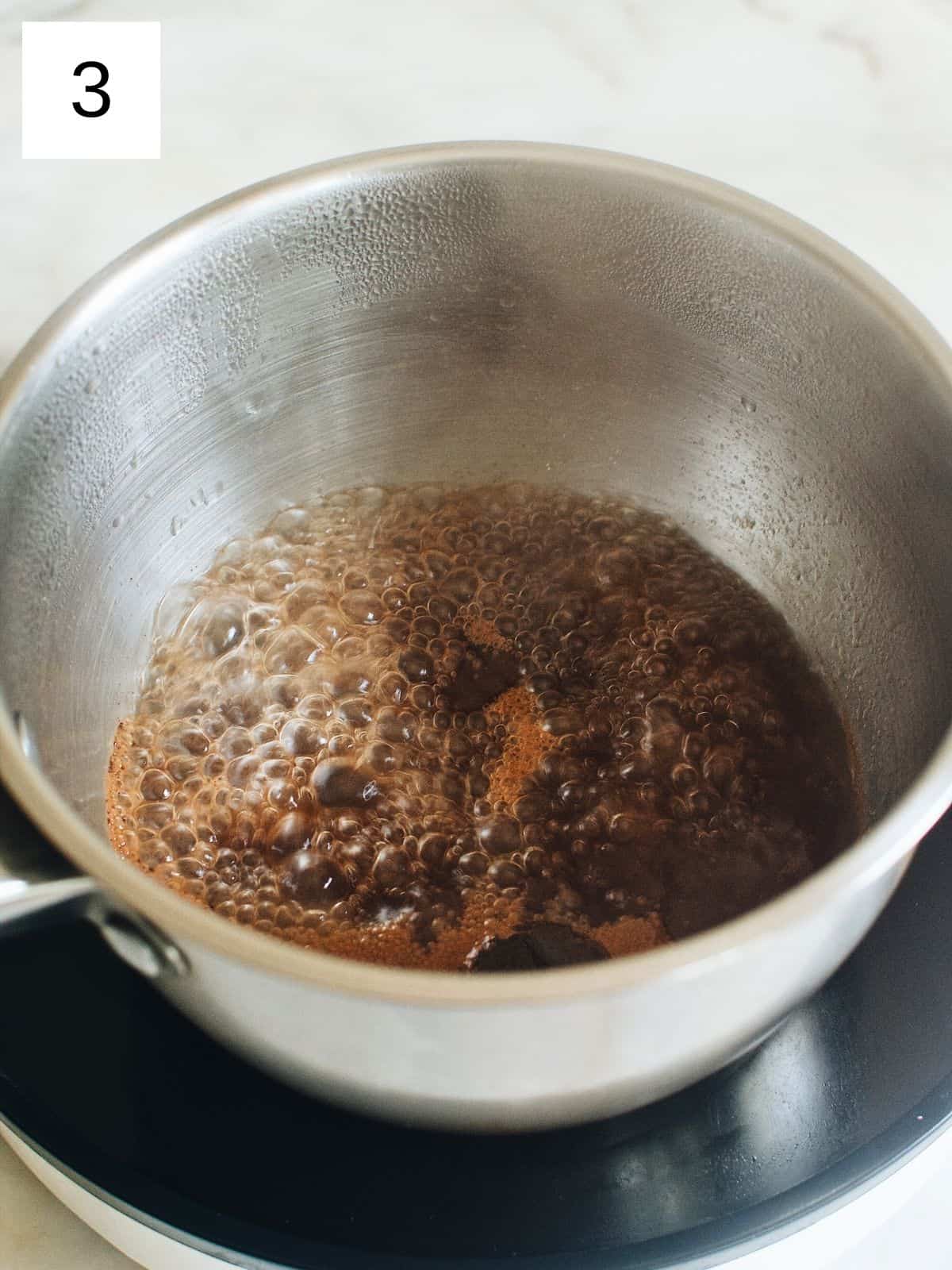
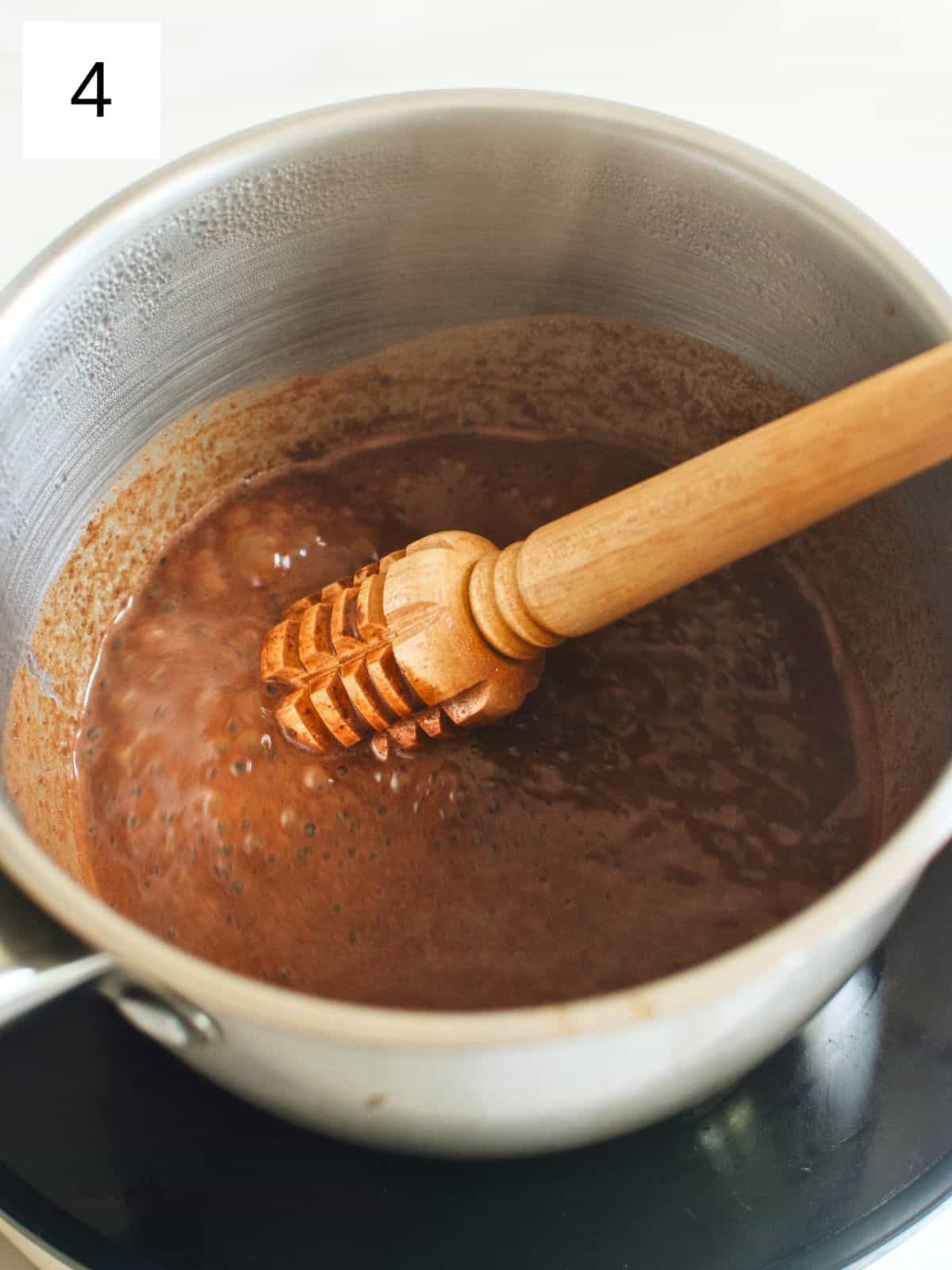
Step 3) Next begin twisting the batirol (image 4) or whisk by rubbing it between your hands for 1-2 minutes (images 5 & 6). This distributes the tableya particles as evenly throughout the mixture as possible.
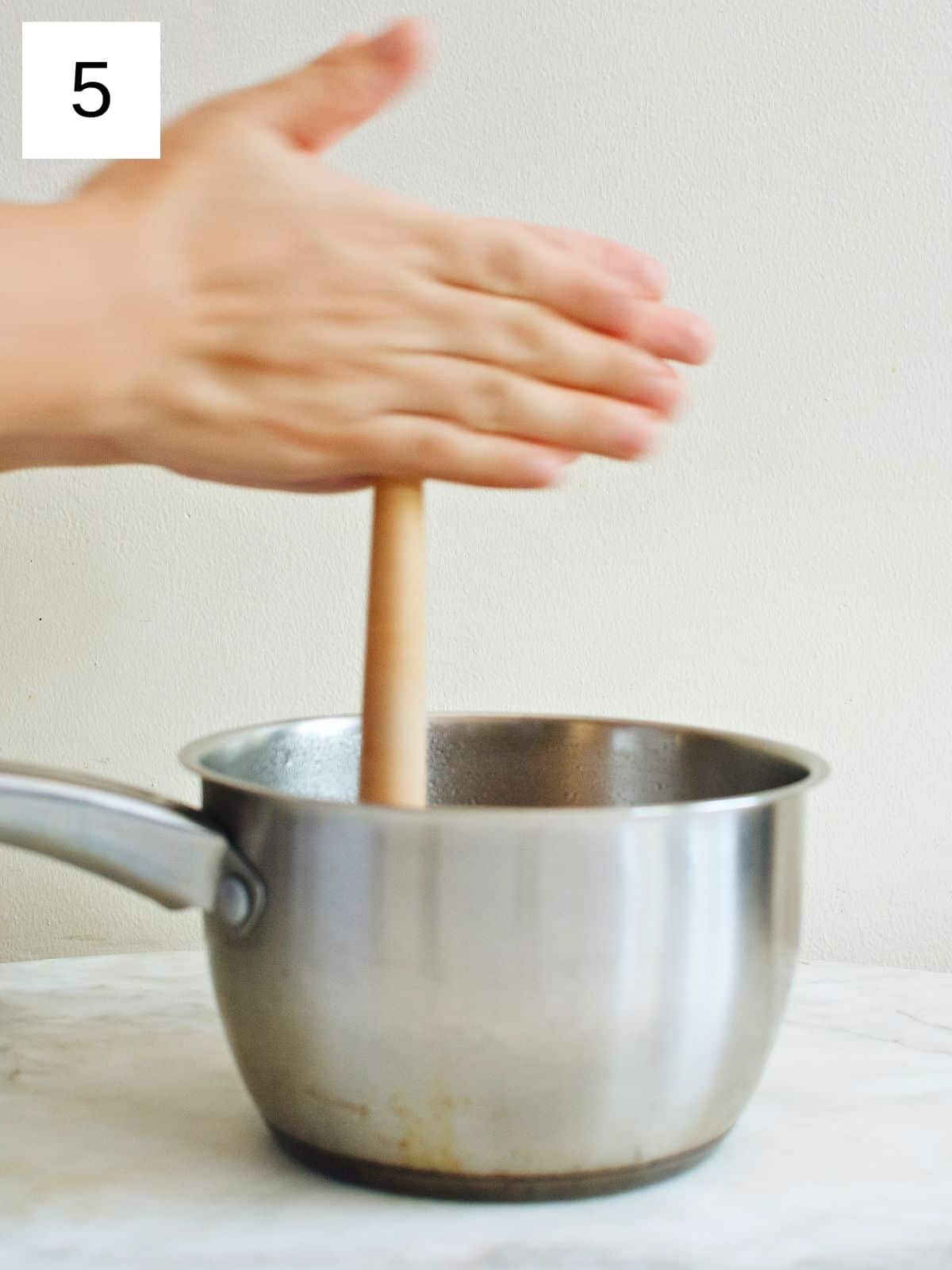
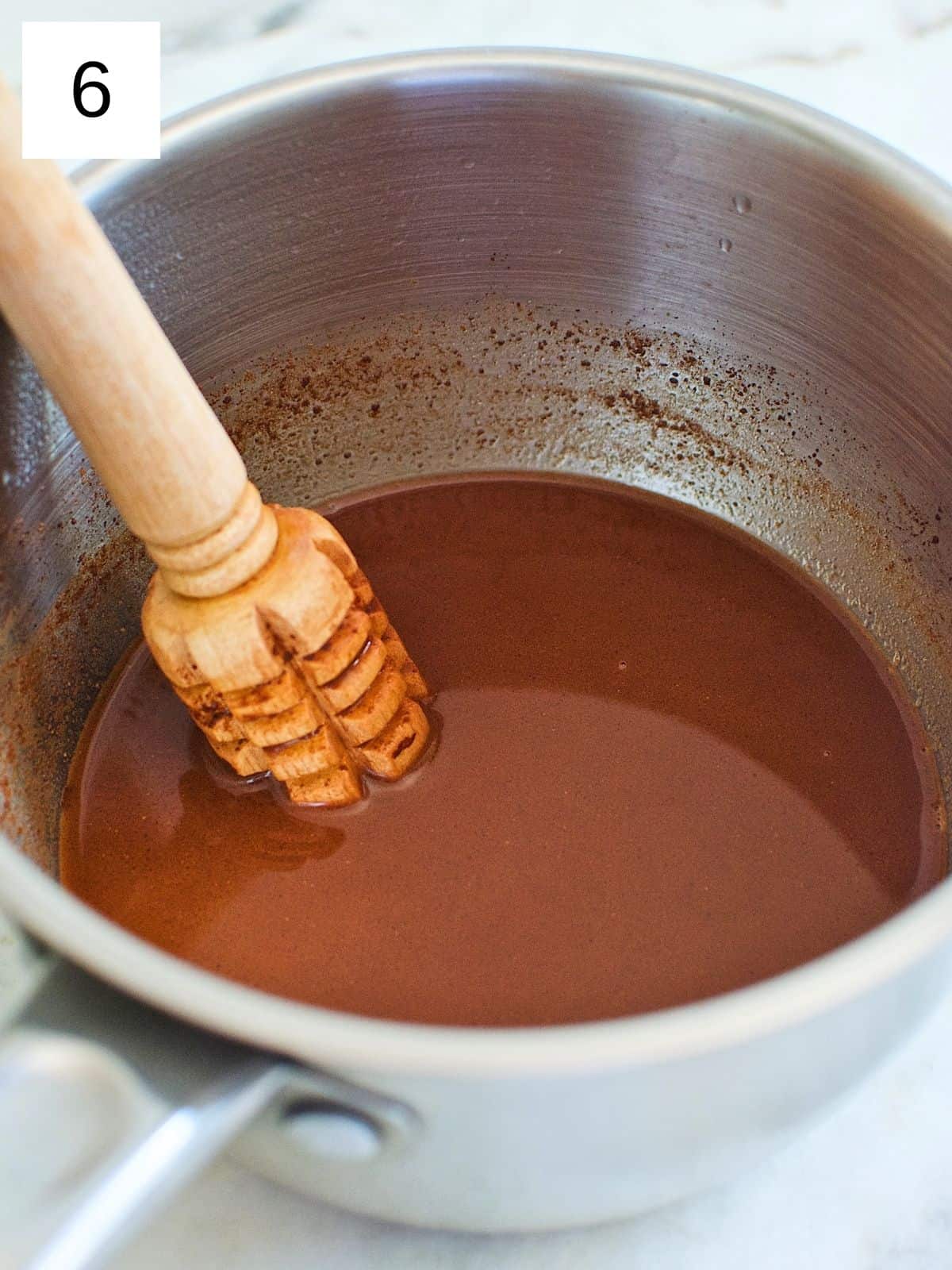
Step 4) If you want to add milk or sugar of any kind, do this now (image 7); otherwise, wait one minute before pouring your sikwate into your cup and giving it a taste (image 8). This makes one serving.
Pro Tip
Tableya is vegan, since it's made of 100% cacao, and you can choose what type of sweetener and creamer to add, if any. Some people also like adding espresso or liquor or even spices for a variation on the traditional type.
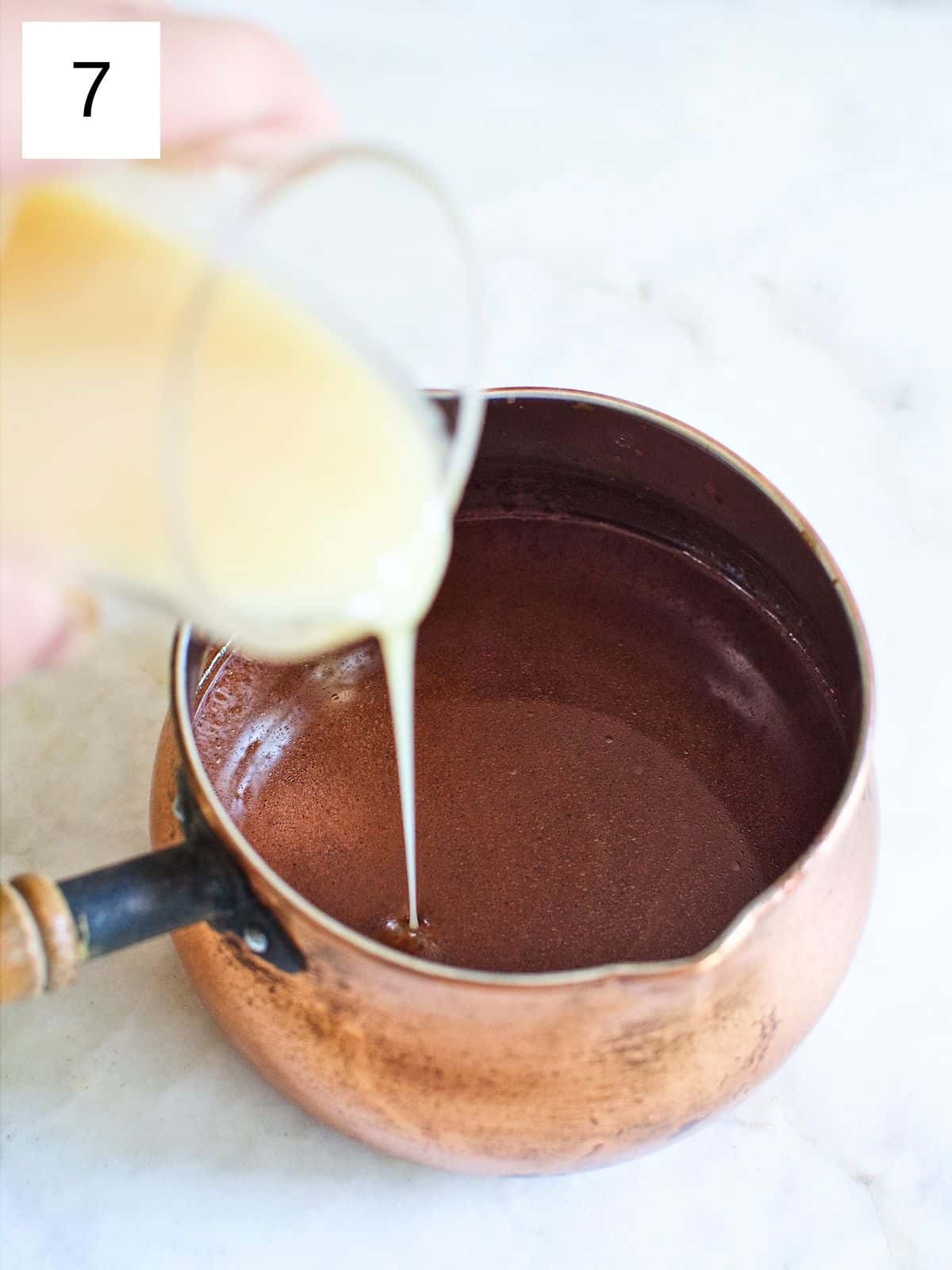
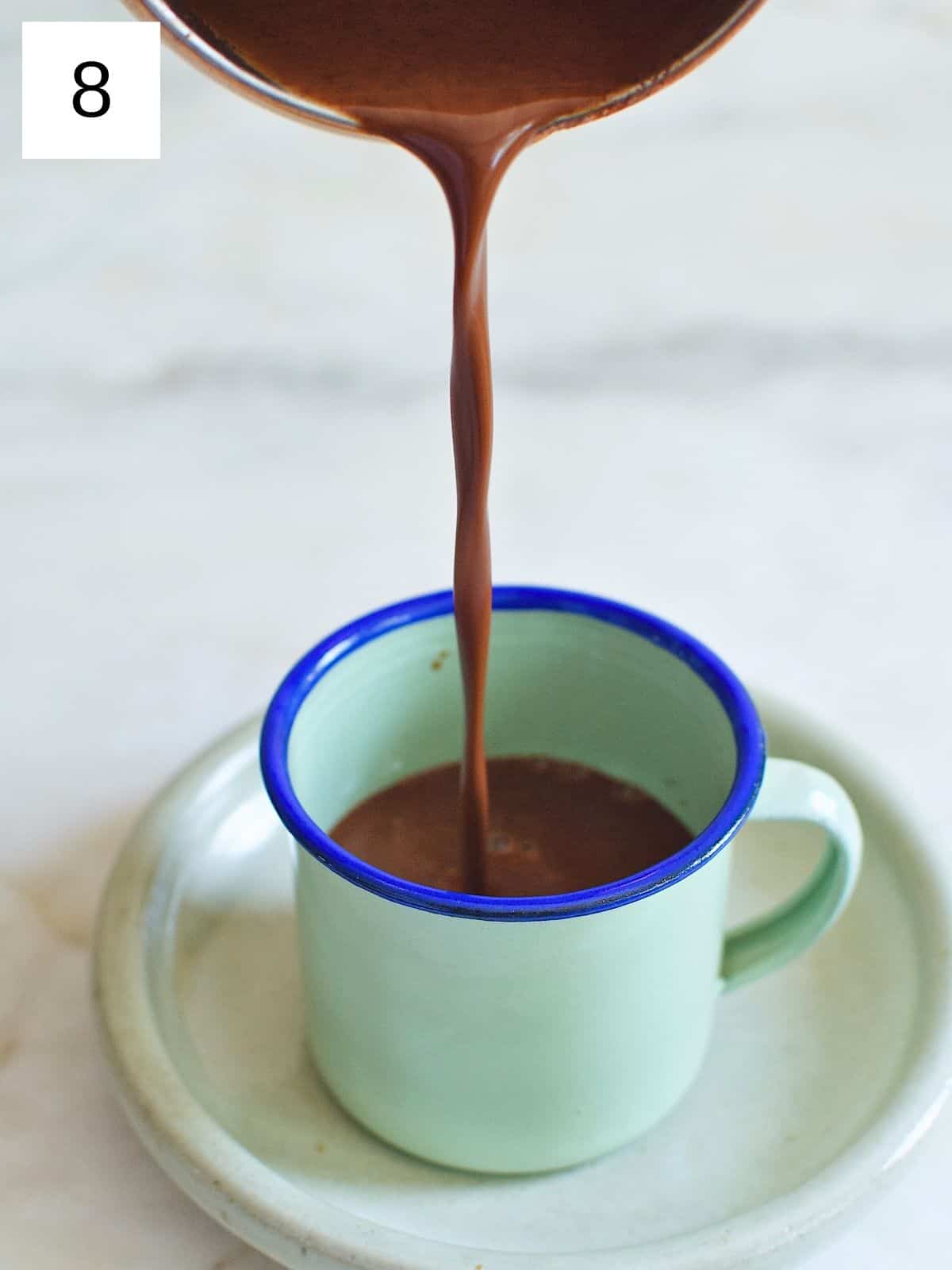
👨🏻🍳 Expert Notes & Tips
Overcooking Dairy: Keep an eye on the sikwate if making it with milk so that it doesn't start cooking and change the flavor of the milk.
Using Vegan Milk: When you're using a non-dairy milk in hot cocoa, I'd recommend using a creamier option, like macadamia or coconut milk, rather than the more common finds like oat or almond milk.
Adding Sweetness: If you plan to add sugar or condensed milk, keep in mind that granulated sugar crystals will add a grainy texture to your sikwate unless you give them sufficient time to melt. Adding condensed milk to the mixture and letting it sit at the bottom will be an experience much like Vietnamese iced coffee.
🙋🏻♂️ Frequently Asked Questions
Does tablea have sugar? No. Therefore tablea is keto friendly and low carb, as it should only be made of cacao beans. But tableya is still very high in calories, and as such its intake should be moderated, especially if prepared with milk and sugar. On the other hand, traditionally-prepared tableya with only water or coconut milk is a great source of healthy fats and antioxidants, and just one cup a day is perfectly good for you.
Yes! If it's smoothly-enough ground, you can use it in place of baking chocolate/100% chocolate in recipes for brownies, cakes, cookies, and the like.
There are plenty of tablea recipes out there, but not many which tell you what to do with it once you've got it! My favorite uses for tableya, beyond the traditional sikwate, are in mole chicken sauce, champorado, and my grandma's chocolate frosting. If you're not sure how to use tablea up, try searching for recipes using baking chocolate.
Since the shelf life of tableya is literally years, it's important to store the cacao tablets in an air-tight container so as to not lose its fragrance & flavor. Tablea's shelf life can be extended by keeping it in a cool, dark spot where it won't develop bloom.
📖 Recipe

Tablea Sikwate (Filipino Hot Chocolate)
Equipment
- copper pot or batirol also spelled baterol, chocolatera
- batidor also called a molinillo; alternatives are a whisk or an immersion blender, if you want to get really fancy
- metal fork
- stovetop
Ingredients
- 1 piece tableya about 1oz./28g
- 1 cup water for a sweeter, but less traditional version, use whole milk
- 2 tablespoons sweetened condensed milk optional
- sugar traditionally muscovado or maybe coconut sugar, optional to taste
Instructions
- To prepare sikwate, first put the water in the pot and bring it to a boil.
- Then drop in the tableya and wait ten seconds for it to soften before breaking it up with a fork. Turn off the heat.
- Next begin twisting the batirol or whisk by rubbing it between your hands for 1-2 minutes. This distributes the tableya particles as evenly throughout the mixture as possible.
- If you want to add milk or sugar of any kind, do this now; otherwise, wait one minute before pouring your sikwate into your cup and giving it a taste. This makes one serving.













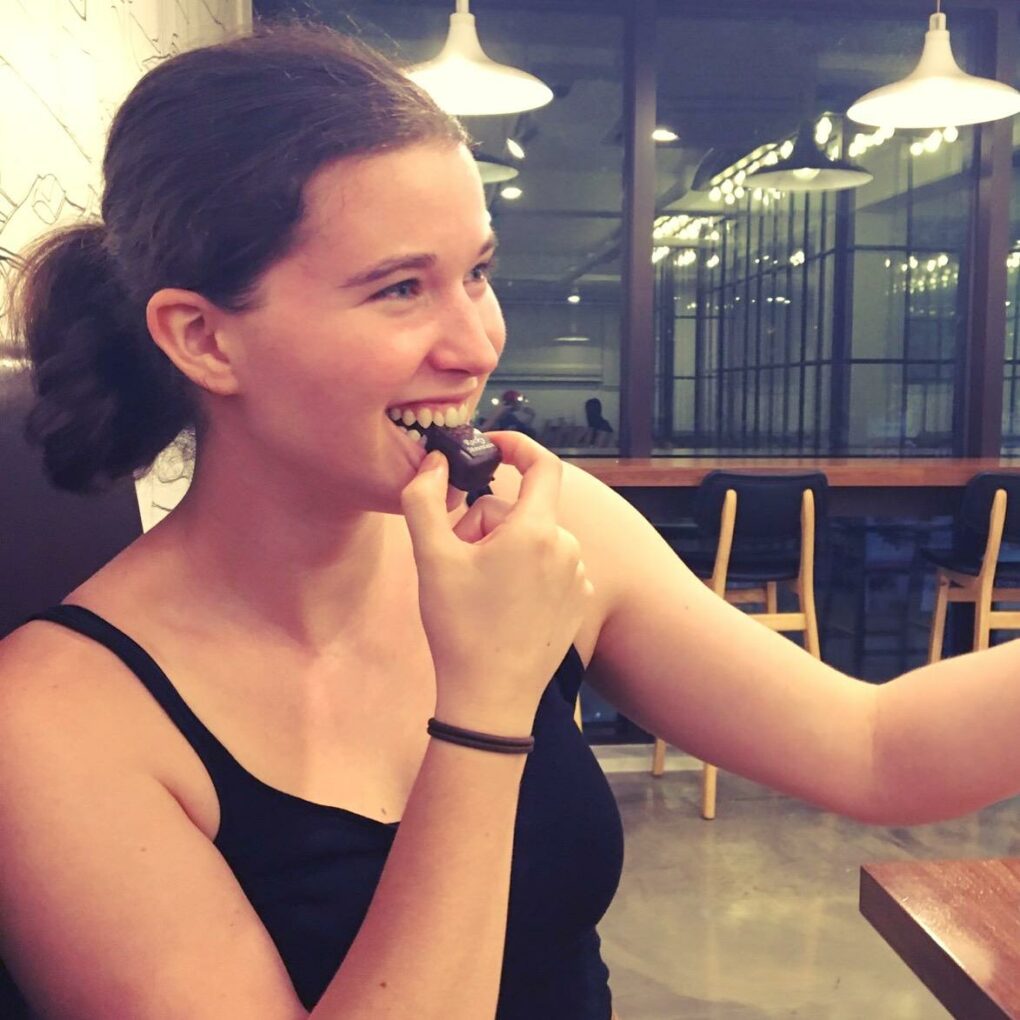


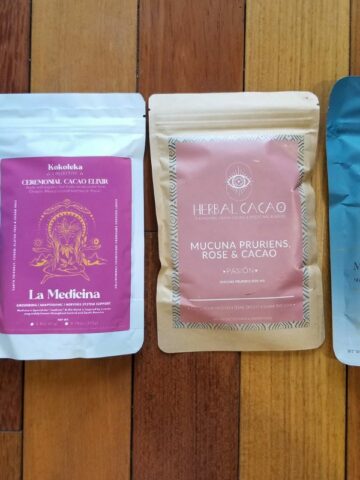
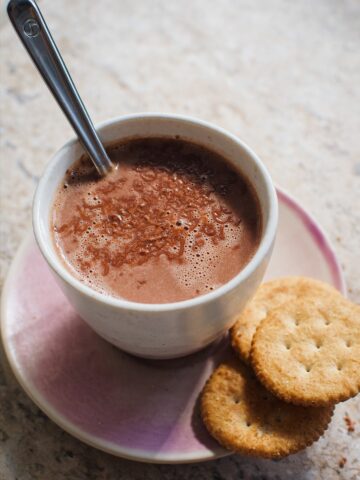
Comments
No Comments